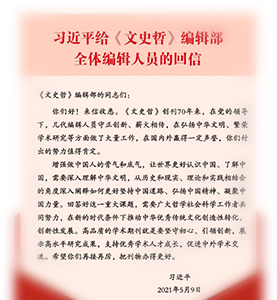知音与知味:论《文心雕龙》的知音批评模式
陶礼天
摘要:“知音批评”模式,是构成《文心雕龙》批评范式的四大模式之一。通过“知音”语义分析,可知其内涵既具有直觉的、感性的特点,又具有分析的、理性的特点。检讨“知音”故事的文献材料和思想背景,发现已有的代表性研究论著,严重忽略了《吕氏春秋》记载这个故事是嵌入在一个“知味”故事框架之中的意义。《吕氏春秋》记载钟子期不但“善听音”,而且他还有一套理论,其基本观点与《荀子》中的《乐论》篇和《礼记》中的《乐记》篇等儒家音乐思想是一致的;刘勰《文心雕龙·知音》总结出的“六观”论,是与《礼记·乐记》以及嵇康《声无哀乐论》等这样的音乐理论文本分不开的,因为这些音乐理论文本才有对如何“知乐”的具体分析。刘勰《文心雕龙》不仅采用“知音”这个概念来作为讨论文学批评具有重视直觉审美体验的内涵,而且是体现了与“六观”方法融会相洽的“知味”批评方法的。知音批评模式中既包括了“六观”论这样的具有客观性的文本细部批评意蕴,也包括重视作品之美“味”的整体性体验与品评的批评理念,这种批评精神和方法贯彻《文心雕龙》全书。
Understanding Music and Understanding Significance: on the Criticism Model of “Understanding Music” in Wenxin Diaolong
Tao Litian
The criticism model of “understanding music” is one of the four criticism models proposed in Wenxin Diaolong (Dragon-carving at the Heart of Literary Writing). Through a semantic analysis, it can be known that “understanding music” have both intuitive/perceptual characteristics and analytical/rational characteristics. Through a review of the materials and ideological background of the story “understanding music”, it is seen that existing representative works all ignored the meaning that the story was embedded in a story of “understanding significance” when recorded by Lüshi Chunqiu (Lü’s Annals). In the record of Lüshi Chunqiu, Zhong Ziqi not only “had an ear for music”, but also hold a set of theory consistent with the basic ideas of Confucian music thought in the piece “Yue Lun (Discourse of Music)” in Xunzi and the piece “Yue Ji (Record of Music)” in The Book of Rites. And the theory of “six observations” concluded in the piece “Zhiyin (Understanding Music)” in Wenxin Diaolong is inseparable from the texts of music theories such as the piece “Yue Ji” and Ji Kang’s “Music Has No Grief or Joy”, because they provided analysis of how to understand music. Applying the concept “understanding music”, Wenxin Diaolong not only discusses that literary criticism owns the connotation of valuing intuitive aesthetic experience, but also reflects the critical method of “understanding significance” being compatible with the method of “six observations”. The criticism model of “understanding music” contains not only the meaning of objective criticism of text details, but also the critical idea of holistic experience and comment that values the great “taste/significance” of the works; and this critical spirit and method is implemented throughout the entire book.


